A Poor Man's Classic 747 Collection in 1:400 Scale
- Jorge A. Zajia

- Oct 8, 2022
- 10 min read
Updated: Mar 25, 2024
The Boeing 747 is one of the most iconic airliners to have ever taken to the skies, and quite possibly the civil aircraft that has been replicated the most in the form of toys and models. It was the symbol of air travel during the heyday of the jet age, and flag carriers from all corners of the world wanted to slap their livery onto one of these emblematic juggernauts to show their place in the global scene.
I remember looking at a 747 for the first time, the thing that struck me the most about it was the fact that it had another smaller row of passenger windows on top of the main passenger deck. It seemed as if two airplanes had been stacked up and blended together into a massive two-story flying building. It never ceases to amaze me how the sheer size of the jumbo jet makes it look so graceful as its lifts off and banks away to some distant destination, and even though the same is true for other giants of the sky, there is just something unique about the 747 that sets it apart.
I am far from being alone in having this particular affinity for the 747, as jumbos wearing the liveries of the flag carriers of the world have sent arrows through the hearts of aviation lovers worldwide. While it is great to know that at least I seem to have good taste when it comes to what airplanes I like, this also means that there are a lot of us after 1:400 scale models of 747s wearing iconic liveries.
Unfortunately for us, the odds are not entirely in our favor when it comes to owning 1:400 replicas of our favorite classic jumbos. Unlike a music concert where the best hits are saved for the end, in the world of 1:400 scale model collecting, manufacturers capitalized on highly popular 747s as soon as the molds were available. This would have been totally fine if it wasn’t for another factor that also seems to have started to take place with the advent of 1:400 scale: releases started to become increasingly limited, and rarity became the norm.
Looking at the story of 1:400 scale and where the classic 747 falls in, it seems as if their production sparked at the same time that brands stopped seeing licensing as an obstacle. In other words, production of highly sought-after 747s in 1:400 really took off with the appearance of the all-so-coveted BigBird 747 series of molds, which has been used to produce releases under the Your Craftsman 400 and Aeroclassics banners, as well as some others to a lesser degree. These classic jumbos are hard to come by in the second-hand market, and when they do pop up, they almost always sell for no less than three figures.

As an alternative to the out-of-reach BigBird 747s, I have resorted to obtaining jumbos released by brands other than Your Craftsman and Aeroclassics, and have dubbed them my Poor Man’s 747 Collection. Make no mistake, these are not exactly cheap either, some of them are also hard to find and have actually been released using the BigBird mold, or even a superior one – yes, such a thing existed once upon a time – under less prestigious brand names. However, at least in my case, these were still easier to find and at least affordable when compared to their BigBird counterparts. Below I will go over the five most prominent members of my Poor Man’s 747 club:

Number One – Pan Am 747-121 N747PA “Clipper Juan T. Trippe” Released in 2005 by Blue Box (180 units made according to DiMA):
I got this model during my first round of collecting 1:400 scale models around 2010. I believe I got it from eBay, as the only other place it could have come from would have been a Waffle collection sale, and I can’t find a record of such an order on their website. I also don’t remember how much I paid for it, so it must not have been a whole lot.
I think the BlueBox mold, also used by Magic Models, is actually decent, with a good level of detail for the time. However, the shape of the forward area of the hump, just above the cockpit windows, is noticeably off, similarly to the Phoenix’s current mold, but Blue Box’s oddly-shaped hump/nose does not look as unpleasant as Phoenix's. These models were also notorious for developing paint bubbles and suffering from zinc rot, but my example looks okay for the most part, with only some discrete paint irregularities on the wings, no worse than those found in some models produced by more reputable brands. On this model, however, the titles on the starboard side are misplaced too far aft (some Pan Am 747s wore them like that, but it appears to be wrong for this specific reg.), it is good enough otherwise.


After I got this model at least two other Pan Am 747s in the billboard scheme were released using better molds: one fairly recent GeminiJets with antennas, and one by Witty Wings (BigBird mold), but I missed out on them. On the plus side, this Blue Box example is the only representation of N747PA “Clipper Juan T. Trippe” in the billboard livery – last Pan Am 747 flight – in 1:400 scale, so there is a small lucky break for me.
Number Two – Alitalia 747-243B I-DEMV "Sestriere" (name missing on the model) Released in 2003-2004 by Herpa Wings:
I got this one early on during the start of my second wave of 1:400 collecting in late 2020/early 2021. There were a handful of these popping up on eBay at the time floating around the $60 mark. That number seemed a bit steep to me, so I passed on a few of them initially. However, when they started to disappear from eBay I started to fear that I might miss out altogether if I kept waiting for a lower price, so I decided to settle for an example that was suffering from tail-yellowing before it was too late. It was priced a bit below their going rate, but shipping costs from Europe killed the deal and I ended up paying more than what I would have liked for a model with a plastic yellowish tail. Since then, as I had feared, they stopped popping up on eBay, so in a way, I am happy that I went for it.


It is a very primitive mold fitted with the most basic landing gear that I have seen in 1:400 scale; it basically consists of a set of straight sticks with wheels. The wings are plastic with no HF antennas on the tips. Also, the shape of the hump is not the most precise. Finally, the name of the aircraft is missing, but we get the titles on the engine nacelles instead, which appear not to have been there on this particular aircraft.
In spite of the aforementioned shortcomings, the model also has a number of pros. First, even though it is a basic mold and lacks precision, I find its overall shape pleasant to the eyes. Additionally, the quality of the printing is good, most of the relevant elements of the livery are present, and the metal fuselage has a nice fresh-looking finish. The wings, in spite of being plastic and not having the HFs, have a good level of detail otherwise and accurate markings. However, oddly enough the wings have the wrong leading edge-to-fuselage joint. Finally, Herpa has a special place in my heart - even though they aren’t a big player in 1:400 scale - as I consider them the pioneers of smaller-scale precision die-cast aircraft models thanks to their work in 1:500 scale. So, all my Herpa 1:400 scale models have that going for them.
Number Three – Iberia 747-256B EC-DIB “Cervantes” Released in 2003-2004 by Herpa Wings:
This is another relatively recent eBay acquisition that ended up being in the same price range as the Alitalia example previously discussed. I like the fact that the model’s previous home was actually in Spain; in Palma de Mallorca.
I have to say that I was pleasantly surprised when I unboxed this model since, based on the eBay listing pictures, I was expecting it to be the same as the Alitalia one but with the Iberia livery instead. However, with this one Herpa made some very welcomed improvements: The landing gear legs are actually very detailed, and the wings and tail are metallic, which means no yellowing. Herpa also got the wings leading-edge-to-fuselage joint right on this one. Even though it clearly did not come from a smoke-free home, it still has the same pristine fresh-looking finish that the Alitalia one has, as well as more livery details. Honestly, if it had HF antennas on the wing tips I think this model would be a pretty serious contender to the Aeroclassics version.


Number Four – Lufthansa 747-230B D-ABZC “Hannover” Released in 2001 by Jet-X (Dragon Wings) (50 units made according to DiMA):
This one came from a Waffle collection sale that took place in 2020. It was made by Jet-X using the well-regarded Dragon Wings 747-200 mold. Barring the basic landing gear and the shortened HF antennas, it is a solid model. However, probably due to age, my example has developed a paint crack pattern on the white underbelly area. Luckily, this issue is not visible unless the model is upside down.


And saving The Best for last…
Number Five – British Airways 747-236B G-BDXI “City of Cambridge” Released in 2012 by InFlight400:
I have been as lucky as I can with my Landor 747s as I was able to grab this -200, and shortly afterward the -400 G-CIVI by GeminiJets when they were released in the 2012/2013 period. Both came from Waffle at original retail price. During that time, I was slowly retreating into a collecting hiatus, but I am glad that I stopped to look back one last time, at the right time, to catch these BA 747s in the Landor livery before completely abandoning the hobby for a few years. Otherwise, there would be a huge void in my collection, and most likely the only way that I would have been able to get a Landor jumbo - without breaking the bank and without having to look under every rock trying to find one - would have been by getting a copy of the recently released G-BNLY in the 100th-anniversary livery.
But anyway, back to this model, at the time I was not sure who InFlight400 was, and I didn’t know that what I had in my hands was a model made on a short-lived improved version of the BigBird 747 classic mold produced by Witty Wings.


This mold had the same superb fuselage shape as the original BigBird one, but with the added benefits of slotted wings and an improved vertical fin. Unfortunately for this model, in spite of it being made on what has been arguably the best 747-200 mold in 1:400 scale, and wearing one of the most striking liveries of the eighties and nineties, it has received quite a bit of criticism – most of it well-earned – regarding the livery's artwork, and the quality of the paint application and printing:
One of the main complaints is the color of the pearl grey top; many collectors argue that it is too bluish. While it is true that the tone differs from many of the other British Airways models released in the same livery, there is a group of collectors that claims the pearl grey tone used in this model is actually closer to the one on the real aircraft.
Unfortunately, the next complaint isn’t as ambiguous. The font used in the titles is wrong. Based on the example I own, I see a combination of letters from the Landor Livery (B and W) and some from the Utopia/Chatham Dockyard font (T, A, and Y). However, since the latter is an evolution of the former, at a glance the font does look okay; the devil is in the details.
Finally, there are some other reported livery inaccuracies affecting the entire production run: one of the most significant being the underwing reg., which is misspelled as G-ADXI instead of G-BDXI. Also, some collectors have reported poor printing and paint application quality. I have to say that my example looks mostly okay, but it does have some chipping on the starboard titles and a cracked paint pattern throughout the midnight blue belly. Fortunately, the latter is not noticeable to the naked eye.
With regards to the imperfections of this model, I have to point out that all of the original BigBird Landor 747s (-200, and -400) were erroneously made using the full-on Utopia/Chatham Dockyard font. So, in this case, getting the BigBird version of this aircraft/livery combo doesn’t do the collector many favors. While there have been subsequent releases of British Airways jumbos in the Landor livery sporting the correct font, these have all been -400s. As of right now, there are no acceptably accurate 1:400 scale British Airways 747-100/200 in the Landor livery. Still, the mentioned shortcomings have not prevented these models from becoming as hard to find as they can get.
Final Thoughts
The good thing about the 747 is that it is so popular (the most produced type in 1:400 scale according to the DiMA database - including all variants) that there is usually more than one way to obtain a copy of a holy grail, even if it isn’t the best representation. The same can’t be said about other types of aircraft, unfortunately. In spite of this, there are some ultra-rare 747s out there that even with all the available options, are almost impossible to find. For instance, a notable void in my classic 747 collection is KLM in their blue top livery.
I am hopeful that I would get to see a refreshed re-run of many of the iconic classic 747s that are so sought-after by many collectors worldwide, as well as new releases of those that have not yet been made. I understand that aircraft model makers need to cater to newer generations of collectors that might not share the same passion for classic jumbos that older collectors do. But I'd also like to think that the number of us in the 30-50 age range that missed out on many of the early BigBird 747s, and are eagerly waiting for that next wave of good quality classic jumbos, is enough to ensure that any manufacturer willing to invest in the cause can walk away with a small fortune.
P.S. It is worth acknowledging Phoenix Model's recent efforts in trying to satisfy the demand for rare classic 747s. But unfortunately, their mold's Achilles' heel is the shape of the nose area, including the hump, which is critical when it comes to the 747. While a model is rarely perfect, Phoenix's classic 747s have to be looked at from the right angle, otherwise, a rather unpleasant shape is revealed. We need a fresh start.
References
Rzjets.net, JetPhotos.com, and Airliners.net were referenced to corroborate information regarding aircraft type and livery details.
The DiMA database was the primary source for model specifics.
And finally, the core of the article was heavily supported by the following articles by Richard Stretton's Yesterday's Airlines:
As well as the following threads on the Diecast Aircraft Forum:
1:400 History - The First aviation400 by RStretton
BA 741/2 Negus & Landor Livery: Variants, Details by barison82
Jorge A. Zajia
















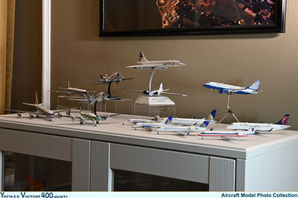
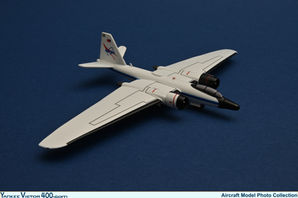


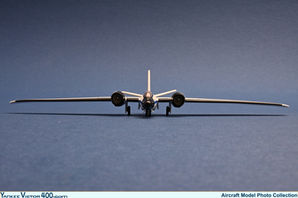


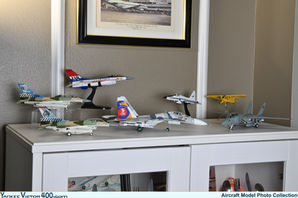

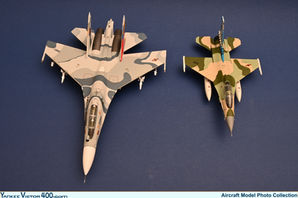
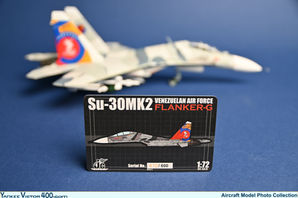
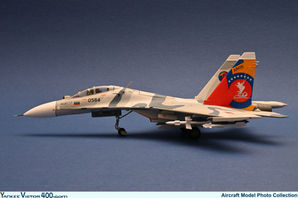










Comments